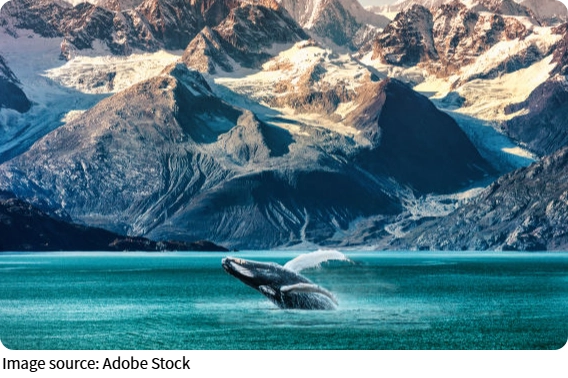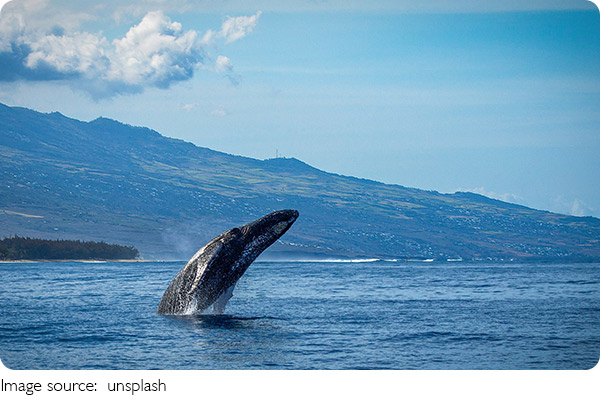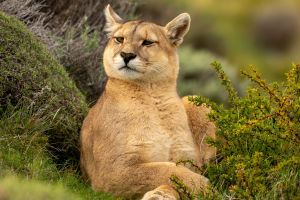Whale View

Alaska is a land of breathtaking landscapes, and one of the most unforgettable experiences here is watching whales glide through the ocean with mountains and glaciers all around.
Taking a boat tour or standing along the shoreline, visitors can witness humpback whales or orcas breaking the water's surface, creating unforgettable moments.
The scale is astonishing—the whales look massive against the snow-capped peaks, and visitors can feel their presence even from afar.
Where to Spot Whales in Alaska
Some of the best spots for whale watching include Juneau, Seward, and Glacier Bay National Park. These areas are rich in marine life, and during the summer months, we have the highest chance of spotting humpback whales, gray whales, and orcas.
Boat tours typically last from 3 to 6 hours and include knowledgeable guides who share fascinating facts about whales, their feeding habits, and the local ecosystem. Prices usually range from $120 to $180 per person.
If we prefer a more relaxed experience, some companies offer small-group tours that allow us to get closer to the whales with fewer crowds. For those who enjoy wildlife photography, Juneau and Glacier Bay are especially scenic for capturing whales alongside glaciers and towering peaks.
Alaskan Landscapes Along the Way
While keeping an eye out for whales, visitors can enjoy Alaska's incredible scenery. Massive glaciers, snow-capped mountains, and dense evergreen forests create a perfect backdrop. Early morning or late afternoon trips are ideal because the sunlight enhances the blue hues of the glaciers and the ocean, making every photo breathtaking.
Even from a distance, the contrast between the ocean and rugged mountains adds a sense of scale, making the whales look even more impressive. The reflections of peaks on calm water make the experience feel almost otherworldly. visitors can even spot bald eagles soaring overhead or seals lounging on floating ice chunks, adding to the richness of the wildlife experience.

Whale Behavior Up Close
Whales in Alaskan waters are active and often visible as they surface, spout, or breach. Humpback whales are famous for their acrobatic jumps, while orcas glide powerfully across the water in sleek pods.
We learn to recognize whale behaviors from their tails, flippers, and spouts. For example, a large splash may indicate a breach, while repeated up-and-down tail movements usually signal a deep dive. Observing these behaviors helps us connect with nature in a way that is both exciting and humbling.
Occasionally, visitors witness whale mothers guiding their calves, offering a glimpse into their social structures and nurturing behaviors. These intimate moments are rare and unforgettable, creating memories that stay with us long after the trip.
Best Time to Visit
The best time for whale watching in Alaska is from May to September, when the whales migrate to feed in nutrient-rich waters. June and July offer peak opportunities, with long daylight hours and calm seas.
If we visit in May or September, there are fewer crowds, and we may still see feeding whales alongside migrating pods. Early bookings are recommended for popular tours, especially in Juneau and Seward, as boats can fill up quickly during peak summer months.
Tips for a Memorable Trip
We should dress warmly, even in summer, as Alaskan waters and winds can be chilly. Waterproof jackets, hats, and gloves are highly recommended. Binoculars help us spot whales from afar, and a camera with a zoom lens captures unforgettable moments.
Small boats give a closer view but can be more unstable, so motion sickness medicine might be necessary for some travelers. Always follow safety instructions and respect wildlife—keeping a safe distance ensures whales remain undisturbed.
It's also a good idea to bring snacks and water, as some tours can last several hours. For those staying overnight, lodges in Juneau and Seward offer comfortable accommodations, often with scenic views of the mountains and ocean. Prices for mid-range lodges range from $150 to $250 per night.
Making the Most of the Experience
Beyond whale watching, visitors can explore nearby hiking trails, glaciers, and coastal towns. Towns like Juneau and Seward offer charming shops, seafood restaurants, and cultural experiences that add to the adventure. Sampling fresh salmon or halibut dishes is a highlight, and local guides can provide insight into Alaskan history and traditions.
Combining land and sea exploration gives us a full appreciation of Alaska's natural beauty. For photographers, there are endless opportunities to capture whales, mountains, glaciers, and wildlife in one frame. The combination of wildlife and landscapes is truly unmatched.
Unforgettable Whale Encounters
Watching whales swim in the Alaskan ocean with towering mountains in the background is an awe-inspiring experience. These moments remind us of the majesty of nature and our role in protecting it.
By learning more about whales, supporting conservation efforts, and observing them responsibly, visitors can ensure these magnificent creatures continue to thrive in Alaska's waters. So, Lykkers, if you ever plan a trip to Alaska, take the chance to witness these incredible whales—it's an adventure we will never forget!
Whale Watching Boat Tour in Juneau, Alaska
Video by Viator


